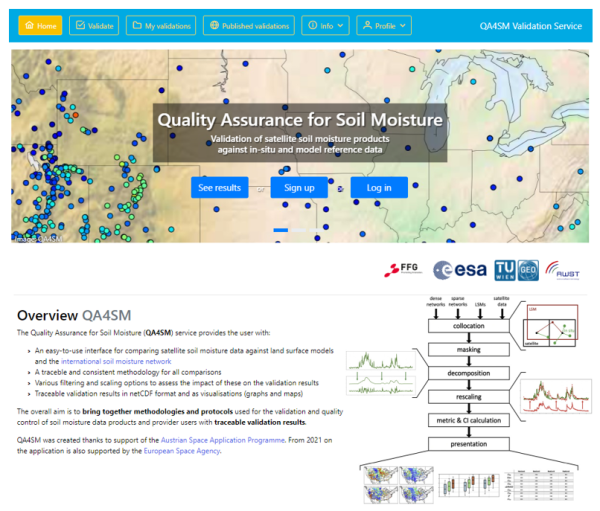- News
- QA4SM Evolution in FRM4SM pres...
QA4SM Evolution in FRM4SM presented at sixth Soil Moisture Validation Workshop
06 Jun 2022
The use and distribution of EO Soil Moisture (SM) data calls for rigorous, automated quality assessment procedures. While validation standards have been accepted in the community and shared through several scientific publications, their employment is often subject to arbitrariness and customary practices. To overcome this, the Quality Assurance for Soil Moisture (QA4SM) service aims to provide a methodological reference and an application tool for SM validation studies at the disposal of the users and producers community.
QA4SM was originally created with support of the Austrian Space Application Program. It is further evolved in the ESA Fiducial Reference Measurements for Soil Moisture (FRM4SM) project, with the goal to make use of FRM-compliant reference data and better characterize errors in satellite SM measurements.
This first evolution of the QA4SM service is now presented at the sixth Soil Moisture Validation Workshop that is held in Perugia, Italy, from 7 to 9 June 2022. Service developments include product inter-comparisons, deeper-level analysis of the results (i.e., integrated with the underlying land cover and climate regimes), deeper integration with ISMN and integration of new SMOS datasets.

QA4SM provides a virtual space, grounded on a powerful computing environment, where users can freely and reliably perform validations of the SM data included in the database. The latter range from single satellite missions or state-of-the-art multi-sensor products to model or reanalysis data sets. Additionally, in situ SM records provided by the International Soil Moisture Network (ISMN) are included and regularly updated to allow global validations against up to five decades of continuous ground measurements.
Every validation is personalized by the user through an intuitive interface to apply spatial and temporal constraints and make use of advanced validation techniques, such as random error characterization of data sets through Triple Collocation Analysis (TCA). All methods included in the core algorithm of QA4SM are based on the best practices and requirements agreed upon by the Global Climate Observing System and the Committee on Earth Observation Satellites groups. The outcome of each validation, including graphical outputs and validation scores can be stored, further processed or included in scientific studies and reports, relying on traceable Digital Object Identifiers (DOIs).